Mybatis框架Dao代理-02
3.3 封装 MyBatis 输出结果
Mybatis自定义别名:
Mybatis提供的对java类型的简定义简短,好几的名称
定义别名步骤:
1.在mybatiszhu配置文件中,使用typeAliases标签声明别名
2.在mapper文件中,resultType=“别名”
示例:
声明别名(在mybatis主配置文件中)
<typeAliases> <!--第一种方式:使用<typeAliases>标签 type属性:java类型的全限定名称(自定义类型) alias属性:自定义的别名 优点:别名可以自定义 缺点:每个类型必须单独定义 --> <typeAlias type="com.hrf.domain.Student" alias="stu"/> <typeAlias type="com.hrf.domain.QueryParam" alias="db"/> <!--第二种方式:使用<package>标签 name属性:包名, Mybatis会把这个包中的所有类名作为别名使用(不区分大小写) --> <package name="com.hrf.domain"/> </typeAliases>
使用方式:
<!--方式一使用-->
<select id="SelectStudentById" resultType="stu"> select id,name,email,age from student where id=#{StudenId} </select>
<!--方式二使用-->
<select id="SelectStudentById" resultType="Student">
select * from student where id = #{StudentId}
</select>
3.3.1 resultType
resultType:执行sql得到ResultSet转换的类型,使用类型的完全限定名或别名。注意如果返回的是集合,拿应该设置为集合包含的类型,而不是集合本身。resultType和resultMap,不能同时使用
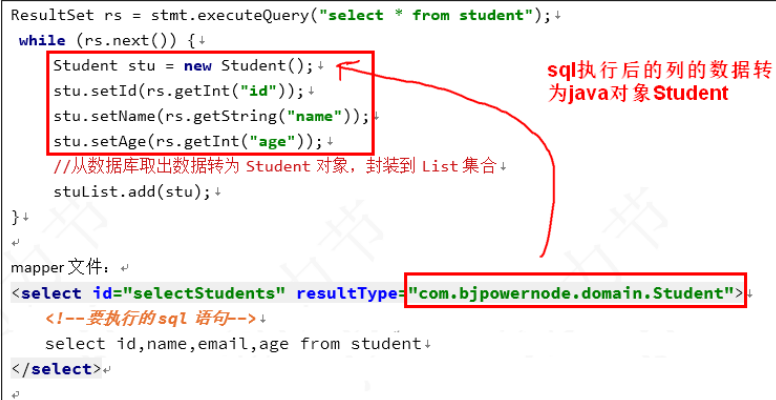

resultType属性:在执行select时使用,作为<select>标签属性出现的
resultType:表示结果类型,mysql执行sql语句。得到java对象的类型,它的值有两种
1)java类型的全限定名称 2)使用别名
resultType:使用java类型的全限定名称,表示的意思是Mybatis执行sql语句,把ResultSrt中的数据转为Student类型的对象。
Mybatis会做以下操作:
1.调用com.bjpowernode.domain.Student的无参构造方法,创建对象。
Student student = new Student(); //使用的是反射机制创建对象
2.同名的列赋值给同面馆的属性。
student.setId(rs.getInt("id"));
student.setName(re.getString("name"));
3.得到java对象,如果dao接口返回值是List集合,Mybatis会把student对象放入List集合中。
A. 简单类型
接口创建方法:

mapper文件写sql语句

编写测试类方法:
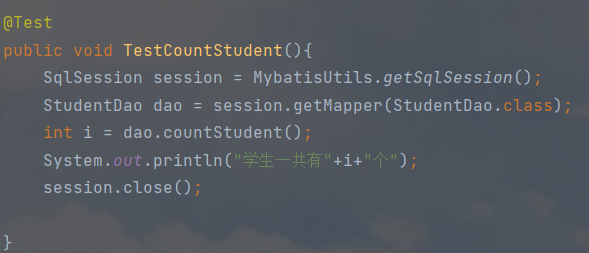
测试结果: 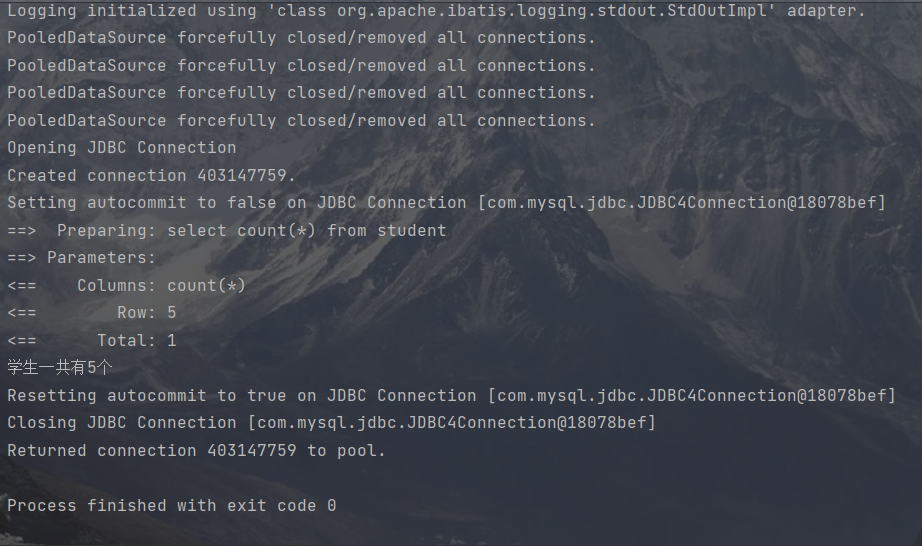
B. 对象类型
接口方法:

mapper文件:

..................等
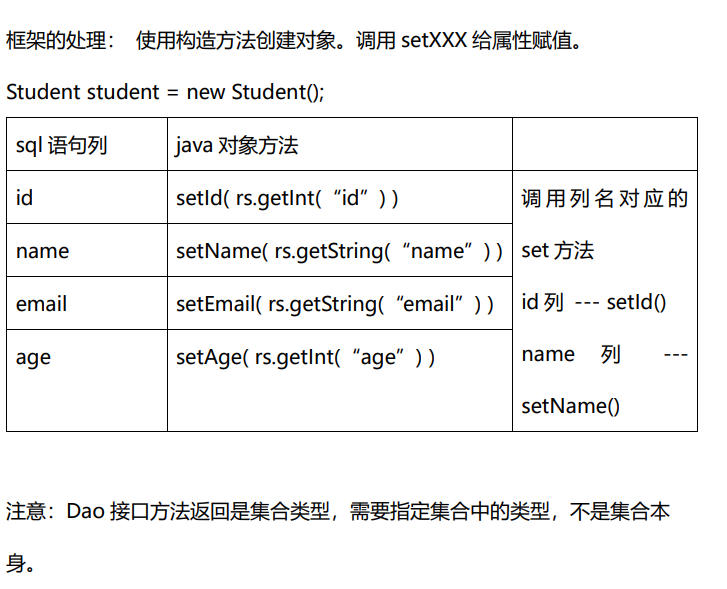

C. Map
sql的查询结果作为Map的Kay和Value。推荐使用
Map<Object,Object>
注意:Map作为接口返回值,sql语句的查询结果最多只能有一条记录。大于一条时是错误的。
接口方法:

Mapper文件:

测试类方法:
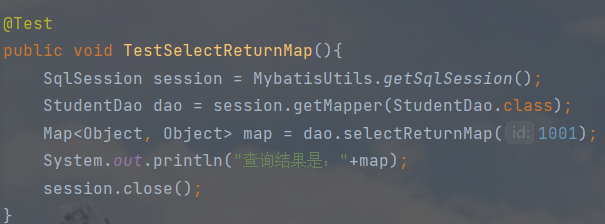
测试结果:
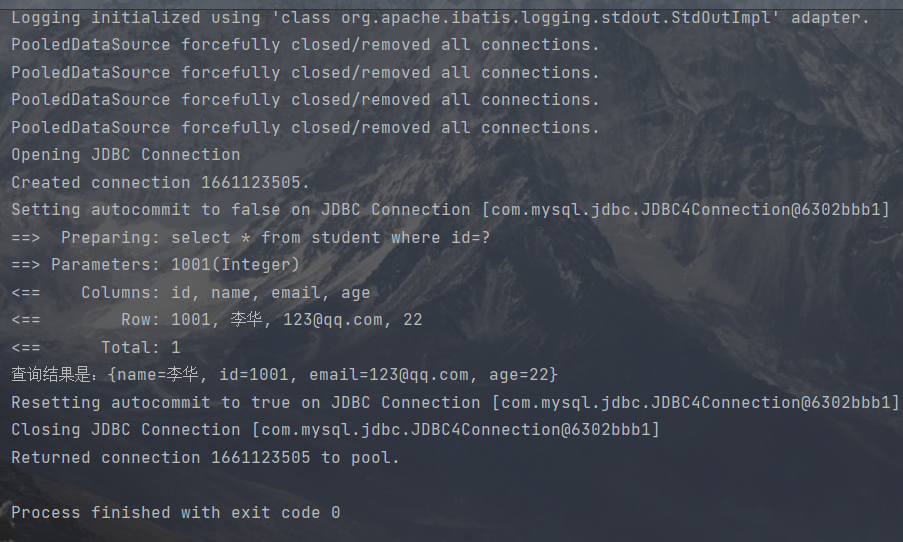
----------------------------------------------------------------------------------------------------------------
3.3.2 resultMap
resultMap可以自定义sql的结果和java对象属性的映射关系。更灵活的把列值赋值给指定的java对象属性
(常用字列名和java对象属性名不一样的情况下)
使用方式:
1.在mapper文件中先定义resultMap,指定列名和属性的对应关系。
2.在<select>中把resultType替换成为resultMap。
案例
1.接口方法:

实体类与数据库表单列表名不一致
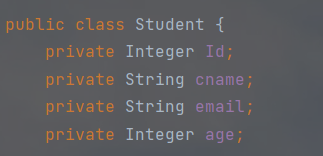
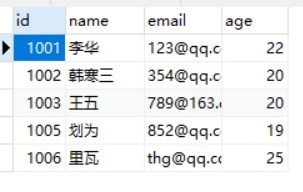
在mapper文件中使用resultMap标签定义:
<resultMap id="studentMap" type="com.hrf.domain.Student"> <!-- id属性是只能用来标记主键字段的 --> <id column="id" property="Id"/> <!-- 非主键字段使用result属性 要与返回值的类的属性进行对应--> <result column="name" property="cname"/> <result column="email" property="email"/> <result column="age" property="age"/> </resultMap> <select id="selectUseResultMap" resultMap="studentMap"> select * from student where id = #{stuId} </select>
编写测试类方法:

测试结果: 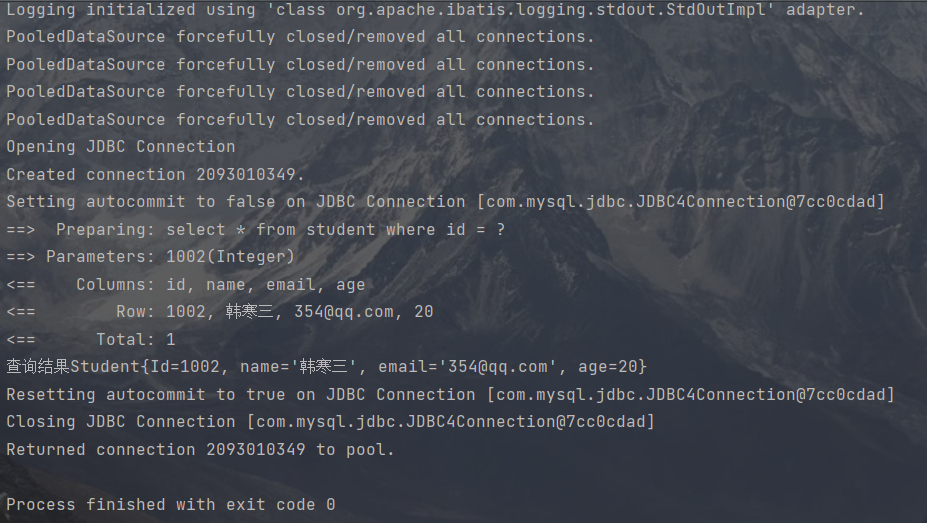
实体类属性名和列名不同的处理方式
1)使用resultType
只需要在sql语句中取别名即可
select id as stuId, name as stuName,age as stuAge from student where name=#{queryName} or age=#{queryAge}
2)使用resultMap
使用resultMap标签与java对象类创建映射关系即可



